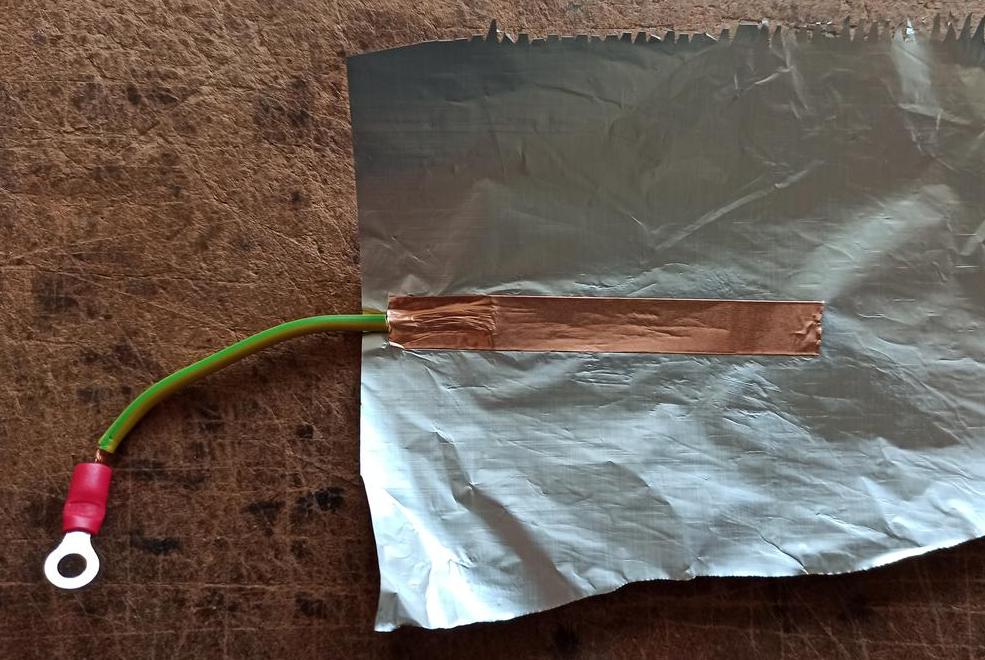I want to shield a capacitive touch sensor circuit from external EMI/RF noise. It's for a commercial product meant to be used in every kind of reasonable environments. I don't have a specific bandwidth or noise source to protect form. It's more generally to improve the reliability.
I also need to keep costs low. Certified, big brand, solutions are too expensive.
My plan is to use food aluminium foil isolated by adhesive plastic film layers on both sides to avoid contact with the solder dots on the PCB. The foil is connected to the circuit ground of the PCB with a multi stranded wire. (Don't care about the colour of the wire, normally it should be black). The wire is glued on the aluminium foil with an adhesive copper tape. The glue of the copper tape is conductive. The impedance between the foil and GND is as low as my multimeter can measure.
Some people say that aluminium foils oxydate very quickly and because of that, the contact can be bad. But I don't think that's an issue because the glued copper tape isolates from the air and, IMO, should prevent oxydation between the two materials. Moreover, I think that food foil is not oxydable but I'm not sure of this.
I have an even cheaper solution with aluminium on paper used in floor heating systems. It looks like the aluminium layer is very thin, fragile and more oxydable, not shiny as the food foil. The advantage is that only one side needs to be covered with adhesive film. It reduces manufacturing time.
The foil would be applied on the internal side of the enclosure, and around the PCB. The enclosure could be any standard in-wall or on-wall plastic enclosure.
The shield and the circuit ground can't be connected to earth because it causes errors in the touch sensor system.
Question: How would you rate this solution? How effective, in term of percentage or dB of external interference? Or compared to other materials? Other materials also embraced are quality copper foil and zinc plated steel sheet. But would add to cost significantly.
Sub-Question: Is the aluminium foil thickness important? Would the aluminium paper be less effective than the food foil because of this?





